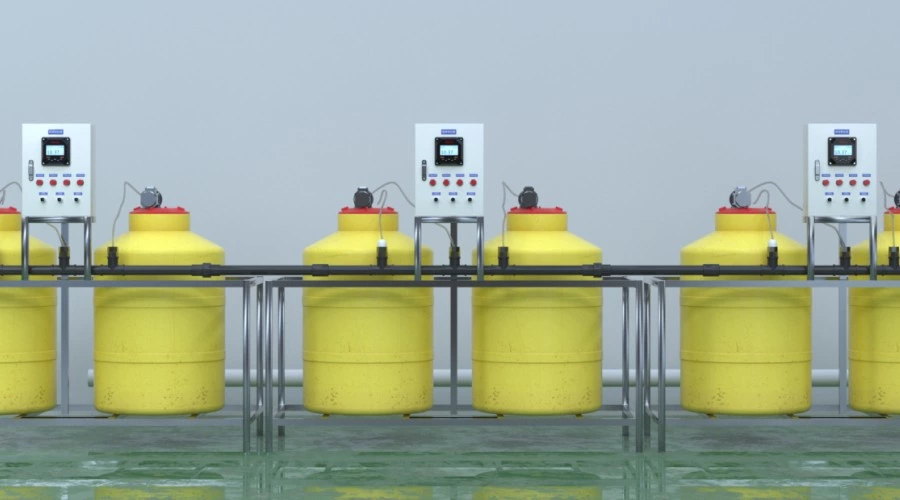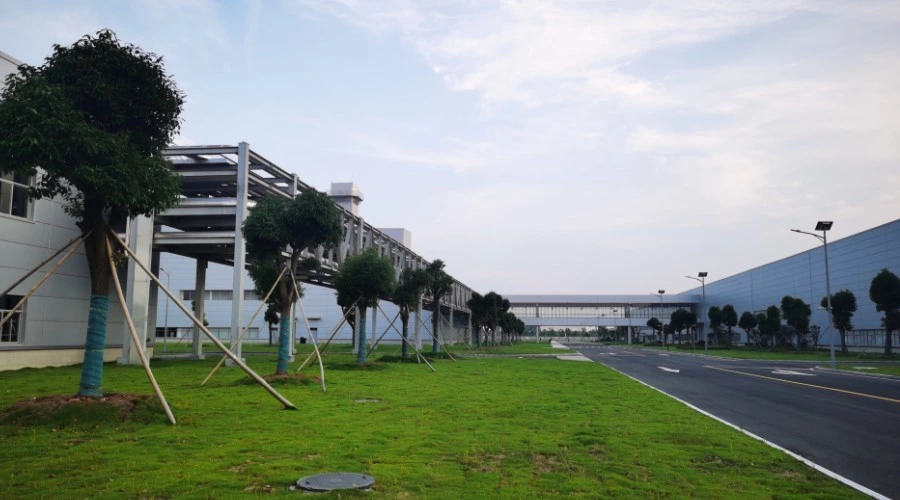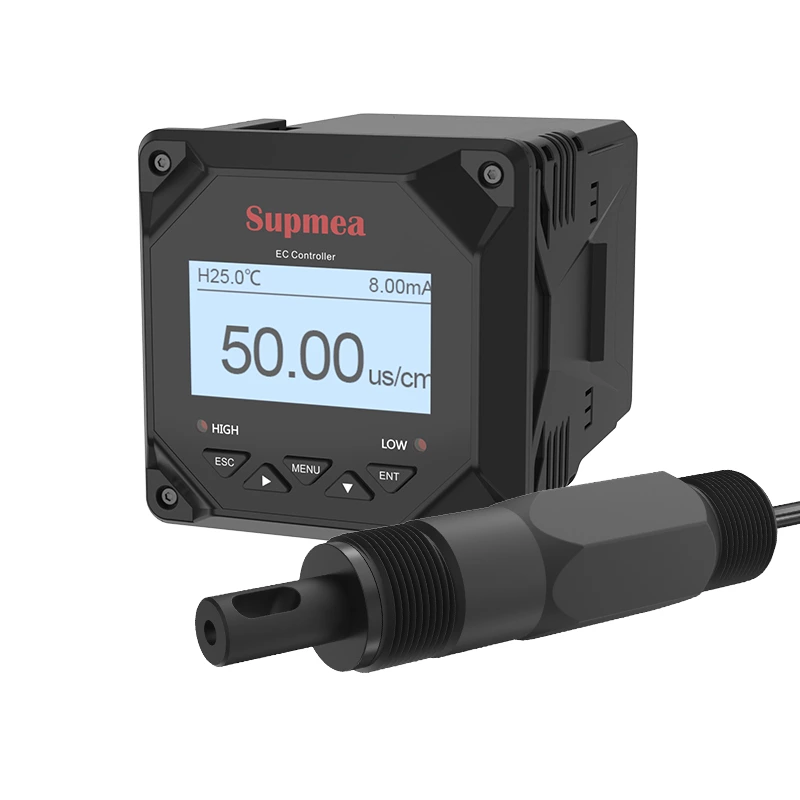Water Conductivity Measurement
Water conductivity measurement plays a crucial role in various industries and scientific fields. By assessing the electrical conductivity of water, researchers, environmentalists, and professionals can gather valuable insights into water quality, industrial processes, and environmental conditions. As a provider of industrial measurement solutions, Supmea offers a range of instruments designed to support reliable water conductivity measurement, catering to the diverse needs of these sectors. In this article, we will explore the concept of water conductivity measurement, discuss the different measurement devices available, delve into the measurement process, and highlight the applications and benefits of accurate conductivity measurement.
Introduction to Water Conductivity Measurement
Water conductivity measurement refers to the assessment of the ability of water to conduct an electrical current. Conductivity is an essential parameter for evaluating water quality, monitoring industrial processes, and conducting environmental studies. By measuring the conductivity, we can determine the concentration of dissolved ions and assess the overall purity or contamination of water samples.
What is conductivity?
Conductivity is the measure of a material's ability to conduct electric current. In the context of water, it indicates the presence of dissolved ions, such as salts, minerals, and other substances. These ions, when dissolved in water, enable the flow of electric charge. Conductivity is influenced by the concentration and mobility of these ions.
Conductivity is typically measured in Siemens per meter (S/m) or microsiemens per centimeter (µS/cm), representing the conductance across a unit distance. It is a fundamental property of water and can vary significantly depending on the dissolved substances present.
Conductivity measurement devices
To measure water conductivity accurately, specialized instruments known as conductivity meters or conductivity sensors are used. These devices provide quick and precise readings, allowing users to assess the conductivity of water samples efficiently.
Conductivity meters come in various types, including handheld meters, benchtop meters, and inline sensors. Handheld meters are portable and convenient for field measurements, while benchtop meters offer advanced features and higher accuracy for laboratory applications. Inline sensors are designed for continuous monitoring in industrial processes.
When choosing a conductivity meter, several factors should be considered, such as measurement range, resolution, accuracy, temperature compensation, and ease of use. Selecting the right meter ensures reliable and consistent conductivity measurements.
How conductivity is measured
Conductivity is measured by passing an electric current through the water sample and measuring the resulting voltage. The meter's electrodes, typically made of graphite or platinum, are immersed in the water, and the electrical conductance is calculated based on the current and voltage readings.
Conductivity measurement principles can vary, including two- and four-electrode methods. Two-electrode meters are suitable for general measurements, while four-electrode meters offer greater accuracy, especially in challenging environments or when measuring low conductivity solutions.
Several factors can affect conductivity measurements, such as temperature, dissolved solids, and electrode polarization. To ensure accurate results, regular calibration and maintenance of the conductivity meter are necessary.

Applications of water conductivity measurement
Water conductivity measurement finds applications in various fields and industries. Some of the key applications include:
Water quality assessment
Conductivity is a vital parameter for assessing water quality. By measuring conductivity, researchers and environmentalists can evaluate the salinity, mineral content, and contamination levels in water bodies. This information helps in monitoring freshwater sources, identifying pollution sources, and maintaining the overall health of aquatic ecosystems.
Monitoring industrial processes
Conductivity measurement plays a crucial role in industries such as pharmaceuticals, power generation, and chemical manufacturing. By monitoring conductivity, operators can ensure the proper functioning of processes, detect potential issues like leaks or fouling, and maintain the desired product quality.
Environmental monitoring
Water conductivity measurement is essential for environmental studies and monitoring programs. It helps in evaluating the impact of human activities on water bodies, tracking changes in conductivity over time, and identifying areas of concern. Conductivity data contributes to the overall understanding of environmental conditions and assists in making informed decisions regarding conservation and remediation efforts.
Benefits of accurate conductivity measurement
Accurate conductivity measurement offers several benefits across different applications. Some of the key advantages include:
Ensuring water safety
By accurately measuring conductivity, water treatment facilities can monitor the effectiveness of purification processes and ensure the supply of safe drinking water. High conductivity levels may indicate the presence of contaminants, enabling prompt action to protect public health.
Optimizing industrial processes
Conductivity measurement helps industries optimize their processes by maintaining desired conductivity levels. By monitoring and controlling conductivity, operators can prevent product quality issues, minimize water and energy waste, and improve overall operational efficiency.
Facilitating environmental studies
Accurate conductivity measurements contribute to comprehensive environmental studies and research. By understanding the conductivity patterns of water bodies, scientists can analyze trends, identify potential threats, and develop strategies for environmental conservation and protection.
Challenges and limitations
Water conductivity measurement is not without its challenges and limitations. Some of the key factors to consider include:
Interference from dissolved substances
Conductivity measurements can be influenced by the presence of dissolved substances in water. Some substances, like organic compounds or gases, may affect the conductivity readings, leading to potential inaccuracies. Understanding the specific characteristics of the water sample and its potential contaminants is crucial for reliable measurements.
Temperature effects on conductivity
Conductivity is temperature-dependent, meaning that the conductivity value changes with temperature variations. To obtain accurate results, conductivity meters often incorporate temperature compensation algorithms or sensors to adjust for temperature effects. However, extreme temperature conditions can still pose challenges to conductivity measurements.
Limitations of certain conductivity meters
Different types of conductivity meters have their limitations. For example, two-electrode meters may experience polarization effects, leading to inaccuracies in low conductivity measurements. It is important to select the appropriate meter for the specific application and consider its limitations to ensure reliable results.
Best practices for conducting accurate measurements
To ensure accurate conductivity measurements, the following best practices should be followed:
Proper sample collection and preparation
Using representative water samples and ensuring proper sample collection techniques are essential. Avoiding cross-contamination, using clean containers, and minimizing exposure to air are crucial steps to obtain reliable conductivity measurements.
Calibration procedures
Regular calibration of conductivity meters using appropriate calibration solutions is necessary to maintain accuracy. Calibration should be performed according to the manufacturer's instructions and at specified intervals. This ensures that the meter provides consistent and reliable results.
Regular maintenance and cleaning of conductivity meters
Conductivity meters should be properly maintained and cleaned to prevent contamination and ensure optimal performance. Regular maintenance tasks may include electrode cleaning, checking for wear or damage, and verifying the meter's overall functionality.

Conclusion
Water conductivity measurement is a fundamental tool for assessing water quality, monitoring industrial processes, and conducting environmental studies. By accurately measuring conductivity, professionals can gather valuable information about the composition and purity of water samples. Conductivity meters offer reliable and precise measurements, allowing for informed decision-making and proactive management of water resources. By following best practices, such as proper calibration and maintenance, accurate conductivity measurements can be obtained consistently.
FAQs
Q1: What are the common units used to measure conductivity?
A1: Conductivity is commonly measured in Siemens per meter (S/m) or microsiemens per centimeter (µS/cm).
Q2: How does temperature affect conductivity measurements?
A2: Conductivity is temperature-dependent, and its value changes with temperature variations. Conductivity meters often incorporate temperature compensation to account for this effect.
Q3: Can conductivity meters measure the conductivity of non-aqueous solutions?
A3: Yes, conductivity meters can measure the conductivity of both aqueous and non-aqueous solutions. However, the calibration and measurement range may vary depending on the instrument.
Q4: What factors can interfere with conductivity measurements?
A4: Factors such as dissolved substances, temperature, and electrode polarization can interfere with conductivity measurements. Understanding these factors is crucial for accurate results.
Q5: Are there any safety considerations when measuring conductivity in industrial processes?
A5: Safety considerations may be necessary when conducting conductivity measurements in certain industrial processes. It is important to follow relevant safety protocols and guidelines to minimize risks.







